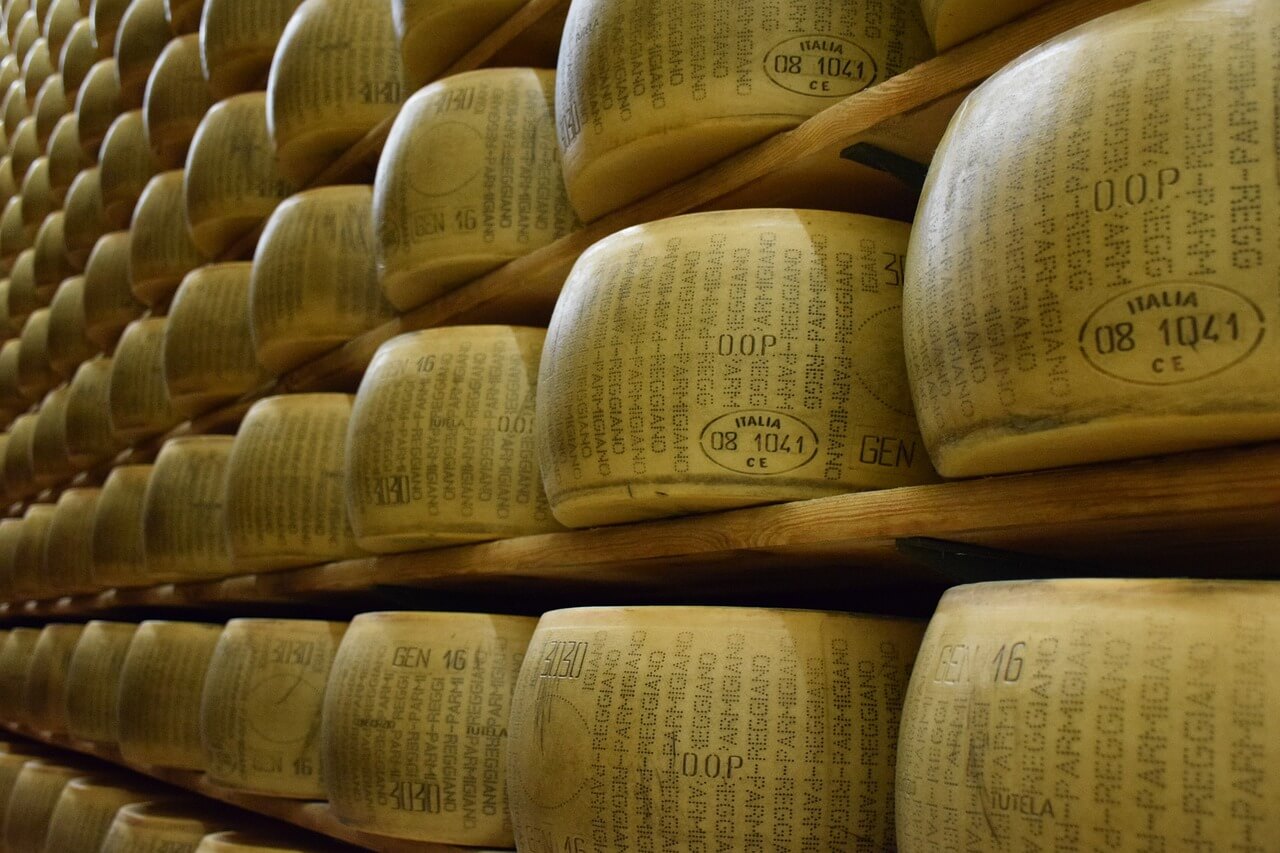Is there anyone who doesn’t love parmesan? Since the answer is no, there is a huge problem with counterfeit parmesan, as everyone wants a slice of that cheese.
To better track parmesan wheels, Italians are now turning to even more technology in the hope of stopping counterfeiting in the supply chain.
Until now, Parmigiano wheels and other products with the DOP label have long been marked in various ways, from serial numbers hidden inside the cheese to QR codes on the label or invisible ink on the product itself, but that hasn’t stopped many from trying to infringe on these protected food items.
DOP stands for Denominazione d’ Origine Protetta, aka Protected Designation of Origin, and has long been the mark foodies look for when searching for authentic food from a specific region.
Now, the makers of Parmigiano-Reggiano, the original and most famous type of parmesan cheese, are turning to edible microchips with blockchain technology on them for better source verification.
The chips inside the parmesan are an impressive technical achievement, having been tested on more than 100,000 blocks of cheese for over a year.
Also read: The Scientist Behind Lickable TV Introduces Electric Chopsticks That Enhance the Taste of Salt
And no, if you accidentally eat a parmesan tracker chip you won’t be tracked by a mob of angry Italians, since this data can only be accessed using a special reader.
From an MSN report:
The new silicon chips, made by Chicago-based p-Chip, use blockchain technology to authenticate data that can trace the cheese as far back as the producer of the milk used.
The chips have been in advanced testing on more than 100,000 Parmigiano wheels for more than a year. The consortium of producers wants to be sure the chips can stand up to Parmigiano’s aging requirement, which is a minimum of one year and can exceed three years for some varieties… The p-Chips can withstand extreme heat or cold, can be read through ice and can withstand years of storage in liquid nitrogen. They have outperformed RFID chips, which are larger, can be more difficult to attach to products, are more fragile and can’t survive extreme temperatures, according to p-Chip Chief Technology Officer Bill Eibon. Parmigiano producers also use QR codes, but the codes are easily copied and degrade during the cheese’s aging process.
A robot heats the Parmigiano wheel’s casein label — a small plaque made of milk protein that is widely used in the cheese industry — and then inserts the chip on top. A hand-held reader can grab the data from the chips, which cost a few cents each and are similar to the ones that some people have inserted under the skin of their pets. The chips can’t be read remotely. In lab tests, the chips sat for three weeks in a mock-up of stomach acid without leaking any dangerous material. Eibon went a step further, eating one without suffering any ill effects, but he isn’t touting that lest p-Chip face accusations it is tracking people, something that isn’t possible because the chips can’t be read remotely and can’t be read once they are ingested.
“We don’t want to be known as the company accused of tracking people,” said Eibon. “I ate one of the chips and nobody is tracking me, except my wife, and she uses a different method.”
In the future, the chip makers hope their technology will also be used for tracking the origin of livestock, crops or medicine. Considering edible batteries are also on the way, tech is doing a lot for foodies nowadays.
Follow TechTheLead on Google News to get the news first.



















